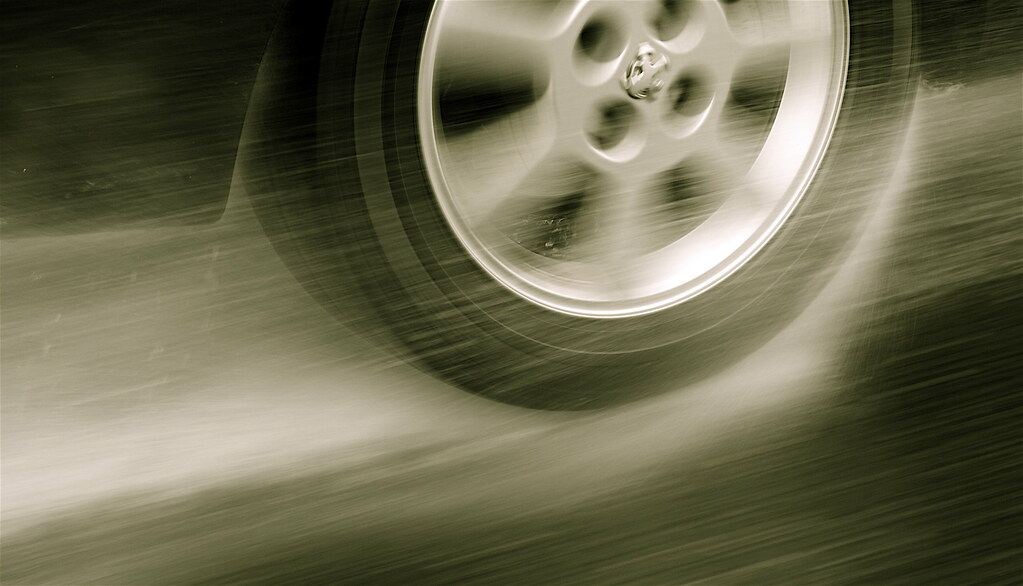Tyre Maintenance Guide
Tips for Driving in Wet Weather

It is a known fact that almost half of weather-related car accidents are due to rain. Whether it is a light shower or a heavy downpour which is also accompanied by mild to strong winds; they make the streets wet and even create potholes on bad roads. Driving in these conditions often reduce the visibility and one needs to depend on the rain-splattered windshield for guidance which makes the entire experience white-knuckled and nerve-racking. It is understandable how easily it leads to an accident. However, follow our tips and tricks to reduce the risk of driving in wet weather considerably.
Avoid driving if possible
It is always advisable to exercise precaution and wait-out the rain, if possible. You can always drive slowly and safely once the downpour stops. This is the best way to avoid accidents. You must only drive when it is absolutely necessary.
Double-check your car
You must always get your car thoroughly inspected to ensure all its equipment like the windshield wipers, headlights, tail lights, brakes etc. are in top order. Tyres need special attention. Lack of proper tread, air pressure, etc. can reduce traction and increase the risk of an accident considerably. Always use good quality tyres like the CEAT Tyres.
Turn the headlights on
Visibility becomes a serious challenge during rain. Turning your headlights on during rain helps improve the visibility. Many states and counties have laws which make it mandatory to turn lights on during a downpour.
Slow down
You must drive as slowly as possible during the wet weather. This helps avoid hydroplaning, skids etc. The most dangerous time is when the rain starts as it causes the oils on the roadway to come up to the surface. This makes the entire road conditions slick which imitates the automotive Slip ‘N Slide and thus, increases the chances of an accident. Waiting a while reduces the risk considerably.
Be a mindful driver
We often drive out of habit and pay little attention to the road. But, when you are driving in rains, it is best to pay special attention to roads and passing vehicles and keep both your hands firmly on the wheels for better control. This is especially helpful if strong winds are blowing as they can move your vehicle with their force.
Increase your following distance
It is always safer to increase the distance between your car and the vehicle in front of you during wet weather. This is because, the risk of collision increases during rains due to slick roads, less visibility and even wet brakes. With more space, you can brake gently and with reduced force.
Try to drive on tracks of vehicles ahead of you
It is a smart move to drive on the tracks left by the vehicle ahead of you. That vehicle has already displaced any standing water and made driving safer for you. You might as well take advantage of it.
Notice larger vehicles
Larger vehicles like trailers are more susceptible to high winds which makes it a tough task for their drivers to manage them. They have difficulty staying in their lanes. Keeping a mindful eye on them and maintaining more distance will help avoid a collision with them.
Always use windshield wipers
People use it during heavy rains but often skip on it during light showers and drizzle. Most cars have adjustable wiper speed to clear away light to heavy moisture from the glass. Today, there are a number of products available as well which when used, can defer the collection of rainwater on the glass.
Defog your windows
Precipitation can quickly fog-up the windshield. Using front and back defrosters help in maximizing the visibility.
Do not brake or turn the wheels during a hydroplane
You must avoid turning your wheels or braking if your car has started hydroplaning as this can trigger a skid or a spin. The best way is to remove your foot off the gas and do your best to keep the vehicle straight till it reclaims traction. If you must brake; it must always be gentle.
Avoid standing water
The risk of hydroplaning increases when driving through standing water. This increases the chances of a skid and your car losing traction. Driving around it if possible or driving extremely slowly is the smartest move here.
Avoid cruise control
Cruise control is an awesome feature to use in dry conditions but it increases the risk of losing control over the car in wet conditions. You often need to reduce the car’s speed by lifting off the accelerator in wet weather but this cannot be accomplished with cruise control in operation. Turning it off will give a driver more control and options and thus will help maximize the safety.
Be mindful of intersections and merging lanes
Driving extremely slowly and exercising all precautions like blowing a horn, turning on the headlights, etc. will help prevent any collisions at the intersections and merging lanes.
Wrapping up
You can easily increase your safety levels while driving in wet weather by consciously employing these safety precautions. It is only the driver’s judgment and presence of mind that can avert some major car accidents during wet weather.


